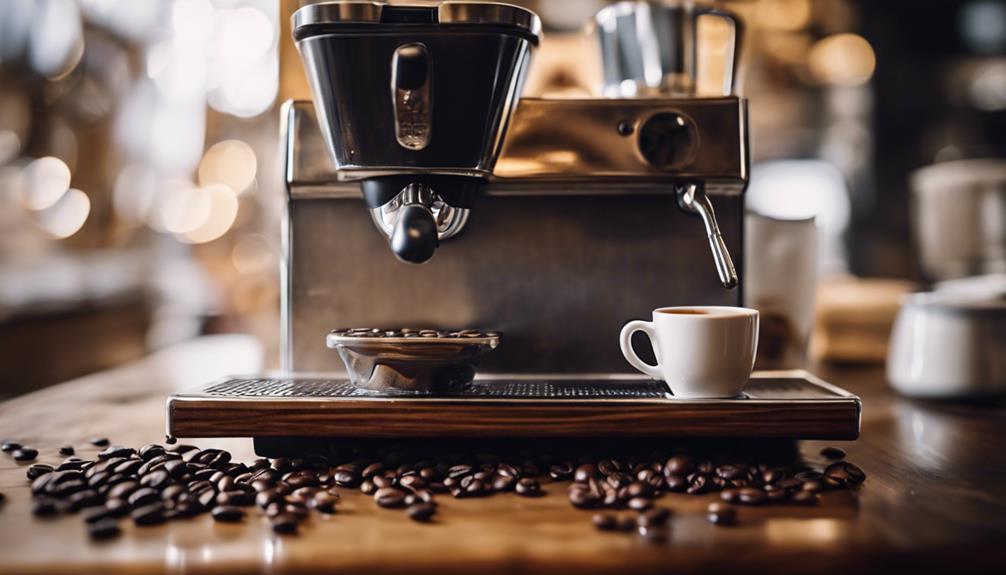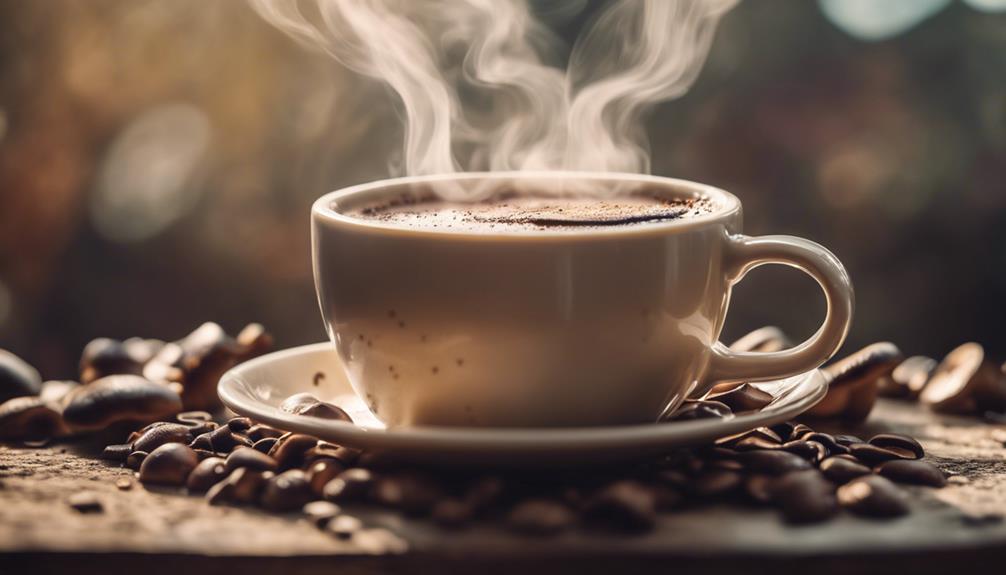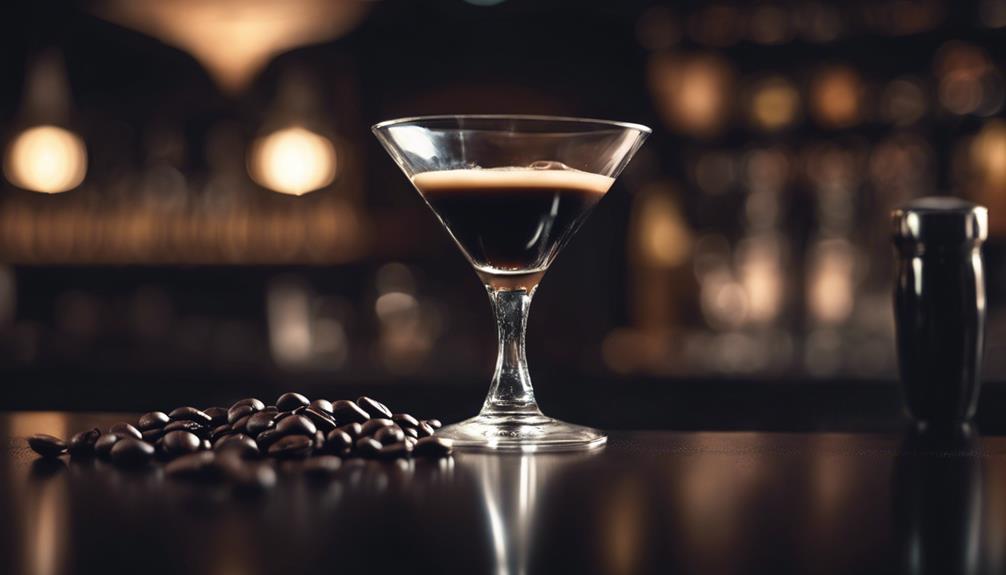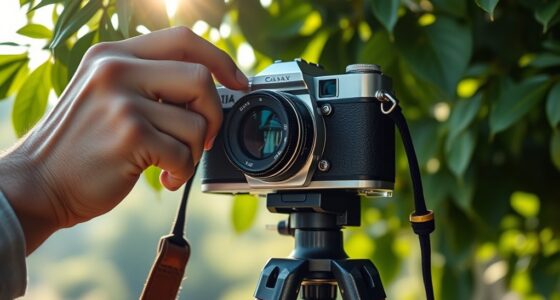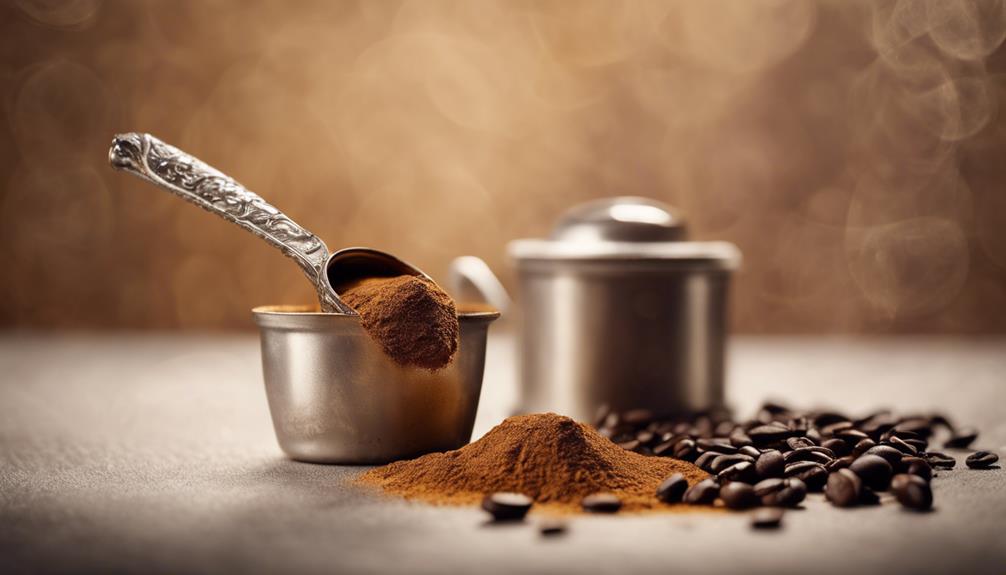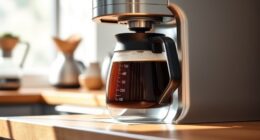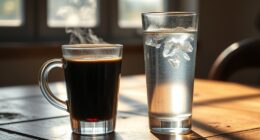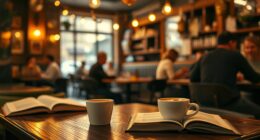You may be curious about the price of a shot of espresso, and it’s not a straightforward answer. On average, the cost of a single shot of espresso can range from $0.20 to over $1.00, depending on factors like the quality of the coffee beans, the size of the shot, and the type of espresso machine used. Additionally, the cost may vary depending on where you purchase it, as high-end coffee shops tend to charge more for premium beans and expertly crafted shots. As you delve into the world of espresso, you’ll learn that the cost involves more than just the coffee itself.
Key Takeaways
- The average cost of a shot of espresso is around $0.20, based on $12.80 per pound of coffee and 55-58 effective shots per pound.
- High-quality specialty coffee beans can range from $12 to $20 per pound, affecting the overall cost of a shot of espresso.
- The size of the espresso shot, type of espresso machine, and specialty drinks also influence the pricing of a shot of espresso.
- Labor and overhead expenses, such as barista wages and rent, contribute to the total cost of a shot of espresso, typically around 25-35% of the total cost.
Espresso Cost Breakdown
You'll be surprised to find that the cost of a shot of espresso boils down to a few key components, including the coffee itself, filtered water, and some overhead expenses. Additionally, the cost of labor, rent for the space where the espresso is made, and equipment maintenance all contribute to the overall cost. However, one of the most important factors in determining the cost of a shot of espresso is the caffeine content of espresso. The amount of caffeine in the coffee beans used will impact the cost, as higher caffeine content typically means more expensive beans.
The coffee used to make a single espresso shot is a significant factor in determining the espresso cost per shot. On average, a standard espresso shot requires around 7 grams of coffee, which translates to approximately $0.20 per shot based on a $12.80 per pound coffee price. This calculation assumes about 64 shots can be yielded from a pound of coffee, without considering wastage.
However, wastage during espresso preparation can reduce the effective yield, resulting in a 10-15% loss factor. This means you'll get around 55-58 shots from a pound of coffee, affecting the overall espresso cost.
Additionally, filtered water and overhead expenses contribute to the final cost, although labor and service costs are typically not included in basic cost analyses.
Factors Affecting Espresso Price
As you step into a coffee shop, several factors come into play that affect the price you pay for a shot of espresso. Understanding these variables can help you appreciate the complexity behind the cost.
The quality of coffee beans, for instance, plays a considerable role in determining the cost of your espresso. Dark roast beans, which are commonly used for a bolder taste, can lead to variability in pricing based on sourcing and quality.
Additionally, the size of the espresso shot also impacts the pricing, with double shots often costing more than single shots.
The type of espresso machine used can also influence the cost, as high-end machines can produce a more precise and consistent shot.
Moreover, specialty drinks that include flavored syrups or additional ingredients typically cost more than a basic shot of espresso, reflecting their complexity and ingredient quality.
Finally, the pricing structure of coffee chains like Starbucks and Dunkin Donuts can differ greatly based on location and brand positioning.
Coffee Quality and Sourcing
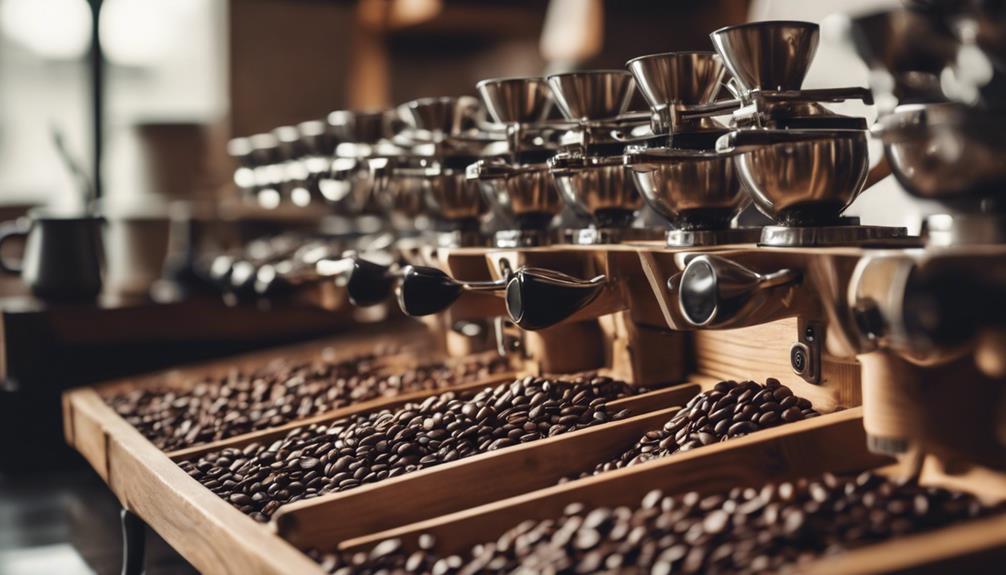
As you consider the cost of a shot of espresso, you'll want to think about the type of coffee beans used and how they're sourced.
Are they high-quality, specialty beans or standard issue? The answer can greatly impact the price you pay.
It's not just about the bean itself – the way it's sourced, such as through fair trade or direct trade, also plays a role.
Coffee Bean Quality
When it comes to crafting the perfect shot of espresso, the quality of the coffee beans plays an essential role in determining the final flavor and cost. Even the slightest variation in sourcing and processing methods impacts the overall taste and price.
As you explore the world of espresso, you'll notice that high-quality coffee beans command higher prices due to their unique characteristics and sourcing methods. Specialty coffee beans, sourced from specific regions and undergoing rigorous grading, can cost considerably more than commodity beans, directly affecting the price of your espresso shot.
The average cost per pound of high-quality coffee beans can range from $12 to $20, compared to lower quality beans priced around $5 to $10 per pound. But coffee bean quality isn't just about the type of bean; processing methods and roast levels also play a vital role in enhancing or diminishing flavor profiles in espresso.
As you savor your espresso shot, remember that the quality of the coffee beans is an important factor in the final flavor and cost. By understanding the importance of coffee bean quality, you'll be better equipped to appreciate the craftsmanship and value that goes into creating the perfect shot of espresso.
Sourcing Methods Matter
You'll find that sourcing methods play an essential role in shaping the flavor profile and cost of your espresso shot. The quality of espresso is greatly influenced by the sourcing methods used for the coffee beans, with higher-quality beans often resulting in a better flavor profile. Specialty coffee sourcing, which emphasizes direct trade and ethical practices, can lead to higher prices but also enhances the overall quality of the espresso produced.
Here's a breakdown of how sourcing methods impact coffee costs:
| Sourcing Method | Impact on Coffee Costs |
|---|---|
| Specialty coffee sourcing | Higher prices due to direct trade and ethical practices |
| Single-origin farms | Distinct flavor characteristics, potentially higher prices |
| Organic and sustainably sourced | Higher prices due to rigorous farming and processing standards |
| Direct trade | Lower prices due to reduced middlemen and fairer prices for farmers |
| Blended coffee beans | Lower prices due to mixed quality and sources |
When it comes to your espresso machine, the type of coffee beans you use can greatly affect the final product. By choosing high-quality, sustainably sourced beans, you can elevate the flavor profile of your espresso shot, but be prepared for potentially higher costs.
Fair Trade Impact
Fair Trade certification not only guarantees that coffee farmers receive a fair price for their beans, but it also has a profound impact on the quality of the coffee. Farmers are incentivized to invest in sustainable farming practices and better cultivation methods. This, in turn, leads to a higher-quality product for you to enjoy in your espresso shot.
As a result, you may notice a slightly higher cost per shot at coffee shops that source Fair Trade coffee. However, this increased cost is a reflection of the ethical sourcing and quality assurance that goes into producing your espresso.
Fair Trade certification also promotes direct trade relationships between farmers and roasters, ensuring better communication and a more consistent product. You can taste the difference in every shot.
According to Fair Trade USA, farmers who participate in the program have reported improved living conditions and increased investment in their communities, which can enhance the overall quality of coffee produced.
Brewing Techniques and Efficiency
By mastering precise brewing techniques, you can greatly reduce coffee waste and boost profitability.
For instance, accurately measuring the coffee dose per shot is vital. A standard single shot requires around 7 grams of coffee, while a double shot needs 17-20 grams. Using a gram scale helps prevent overfilling and wastage, which can range from 10-15% during preparation. By doing so, you can calculate the cost of each shot more accurately and minimize losses.
As you develop your skills as a barista, you'll learn to make adjustments in grinding and dosing for improved espresso quality. Efficient brewing techniques also enable you to maximize the number of effective shots per pound of coffee.
On average, you can get around 55-58 shots per pound after accounting for wastage. This not only reduces waste but also increases your profit margin. By perfecting your brewing techniques, you can offer high-quality espresso shots while keeping costs under control.
Market Trends and Consumer Demands
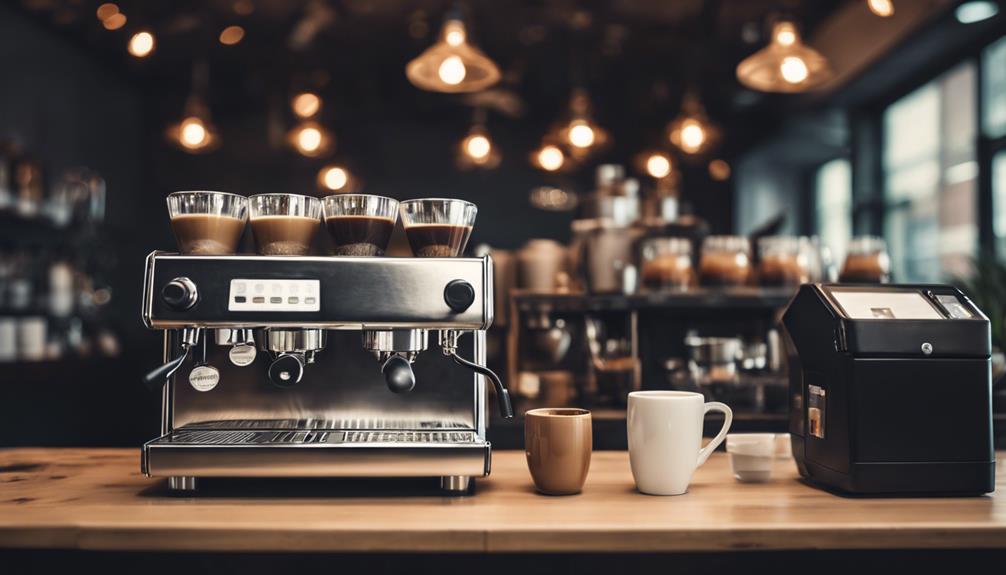
As you navigate the coffee shop scene, you're likely noticing a shift towards gluten-free options and a growing emphasis on high-quality, ethically sourced coffee.
You're not alone – consumers are driving this trend, and coffee shops are responding by adapting their menus and pricing strategies.
Gluten-Free Options Rise
With the growing awareness of gluten-related health issues, you're likely to notice that coffee shops and restaurants are increasingly catering to your dietary needs by incorporating gluten-free options into their menus. This trend is driven by the growing demand for gluten-free products, particularly among health-conscious consumers and those with dietary restrictions. As a result, coffee shops are now offering gluten-free snacks and treats to pair with your espresso.
| Menu Item | Gluten-Free Option | Additional Cost per Cup |
|---|---|---|
| Croissants | Almond flour croissants | $0.50 |
| Muffins | Gluten-free blueberry muffins | $0.75 |
| Cakes | Flourless chocolate cakes | $1.00 |
| Cookies | Gluten-free oatmeal cookies | $0.25 |
| Biscotti | Almond flour biscotti | $0.50 |
As you can see, coffee shops are willing to accommodate your dietary needs, but it may come at an additional cost. On average, you can expect to pay an extra $0.25 to $1.00 per cup for gluten-free options. This may not be a significant increase, but it's important to factor it into your coffee budget.
Coffee Quality Matters
You're likely paying a premium for your daily espresso shot because of the growing emphasis on high-quality, specialty coffee beans that cater to your discerning palate and values. As a consumer, you're driving the demand for sustainably sourced and premium coffee offerings, which reflects a shift towards quality over quantity in your beverage choices. This trend is evident in the rise of single-origin and artisanal coffee, which can raise the price of espresso shots considerably compared to standard blends.
The quality of coffee beans used in espresso has a direct impact on its flavor profile and overall cost. Higher quality and specialty beans often fetch a premium price, and you're willing to pay more per shot for a superior taste experience. Coffee costs can vary greatly based on the quality of the beans, with specialty shops charging upwards of $4 for high-quality espresso compared to $2 to $3 for lower quality options.
As you prioritize health and dietary needs, such as gluten sensitivity and organic products, you're influencing market trends and driving the demand for high-quality coffee that meets your standards.
Labor and Overhead Expenses
When you factor in the cost of a shot of espresso, labor and overhead expenses are important components that can't be overlooked, eating up 25-35% of the total cost depending on your coffee shop's operational model.
Let's break it down. Labor costs for preparing espresso can vary greatly. For instance, a barista earning $15 per hour translates to approximately $0.75 in labor costs for each drink made in a 3-minute timeframe.
Additionally, overhead expenses like rent, utilities, and equipment maintenance must be factored into your pricing strategy. Don't forget about hidden costs like employee benefits and training, which also contribute to overall labor expenses.
Regularly reviewing labor efficiency and overhead expenses is vital for optimizing profit margins and maintaining competitive pricing for espresso drinks.
It's important to recognize that labor and overhead expenses account for a substantial portion of your espresso costs. By understanding these expenses, you'll be better equipped to set prices that guarantee profitability while still appealing to your customers.
Calculating Profit Margins
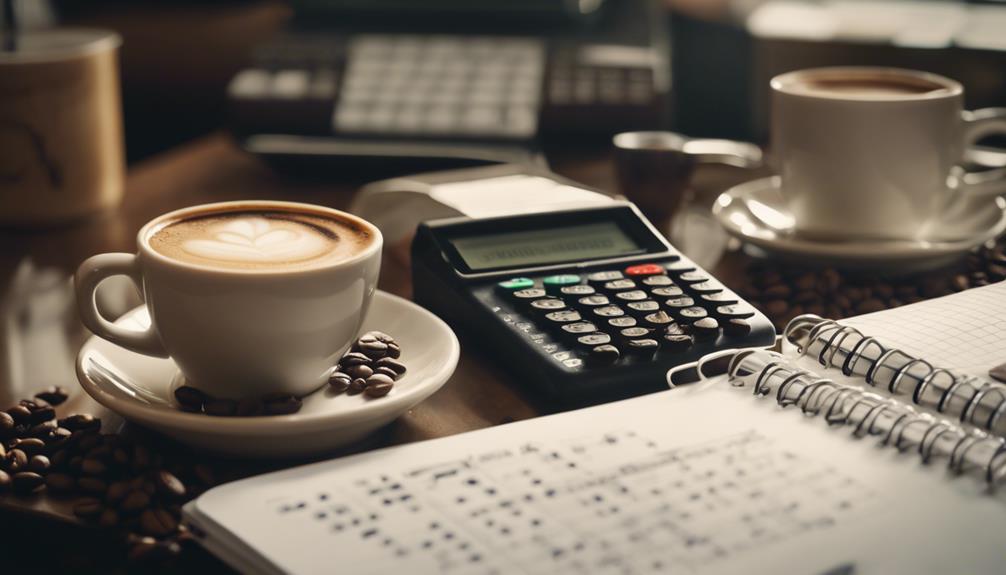
About 75% of your coffee shop's revenue is absorbed by the cost of goods sold and labor expenses, leaving a narrow window for profit. This makes accurately calculating profit margins vital to your business's survival.
When calculating profit margins, you need to take into account all the costs involved in serving a drink. For instance, the cost of a single espresso shot is around $0.20, but when you add other ingredients like milk and cups, the total cost per serving can jump to around $0.89 for a flavored latte. To achieve a desired gross profit margin of 60-80%, you must set retail prices that cover both the cost of goods sold and additional expenses like labor and overhead.
It's essential to regularly review and adjust your pricing based on ingredient costs and competitor pricing to maintain profitability. This ensures that profit margins remain healthy.
Pricing Strategies for Coffee Shops
As you develop your pricing strategies for your coffee shop, you'll want to focus on three key points:
pricing for profit,
accurate cost calculations,
and competitive market analysis.
By getting these elements right, you'll be able to set prices that attract customers while ensuring your business stays profitable.
Pricing for Profit
To maximize profits, you need to develop a thoughtful pricing strategy that balances your coffee shop's unique value proposition with customer demand and local market conditions. This involves considering various pricing methods, such as keystone pricing, which doubles the wholesale cost to set the retail price, guaranteeing a clear markup for profitability. Value-based pricing is also essential, as it sets prices based on the perceived value customers place on the product, which can maximize profits, especially for specialty drinks like espresso.
| Pricing Strategy | Description | Benefits |
|---|---|---|
| Keystone Pricing | Doubles wholesale cost to set retail price | Guarantees clear markup for profitability |
| Value-Based Pricing | Sets prices based on customer-perceived value | Maximizes profits for specialty drinks |
| Competitive Pricing | Analyzes local competitors to set prices | Aligns prices with market conditions |
When pricing for profit, you must account for all components of drink costs, including ingredients and overhead, to establish a sustainable pricing model that maintains a desired profit margin of 60-80%. Regularly reviewing and adjusting menu prices based on ingredient cost fluctuations and market conditions helps guarantee ongoing profitability and financial stability for the coffee shop. By considering these factors, you can develop a pricing strategy that drives profits per shot while maintaining customer satisfaction.
Accurate Cost Calculations
Calculating the cost of a shot of espresso accurately requires delving deeper into the various components that make up the final price, including the often-overlooked expenses that can greatly impact your coffee shop's profitability.
When you break it down, the cost of coffee beans averages around $0.20 per shot. However, that's not the only expense to take into account. Additional components like filtered water, cups, lids, and sleeves add approximately $0.24 to the overall price.
Labor costs are also essential; with a barista earning $15 per hour and producing 30 coffees per hour, the labor cost per espresso shot would be around $0.50.
Don't forget about the hidden costs of espresso preparation, such as equipment maintenance and utilities. Understanding these costs will help you set a price that guarantees profitability.
Unlike large coffee chains, which may offer a double espresso for a fixed price, you need to calculate the cost of each shot individually. By factoring in all these expenses, you can set a price that covers your costs and yields a decent profit margin.
Competitive Market Analysis
By monitoring competitors' prices, you can confirm your espresso shots are competitively priced, aligning with market standards and consumer expectations. This involves analyzing the cost structures of local coffee shops, including their use of in-house or vendor products, to make informed decisions about your pricing strategy.
You can employ various pricing strategies, such as keystone pricing, value-based pricing, or premium pricing, to position your espresso offerings effectively in the market based on perceived value and quality.
When setting prices, don't forget to factor in hidden costs like labor, rent, and utilities, as these can greatly impact profitability and competitive pricing. Regularly reviewing competitors' prices and adjusting your own can help maintain a competitive edge, especially in a market where larger chains may benefit from economies of scale.
For instance, if you find that competitors are offering two shots per dollar, you may need to reassess your pricing strategy to stay competitive. By staying on top of competitive pricing, you can confirm your espresso shots are priced correctly, attracting customers and driving sales.
Competitor Analysis and Pricing
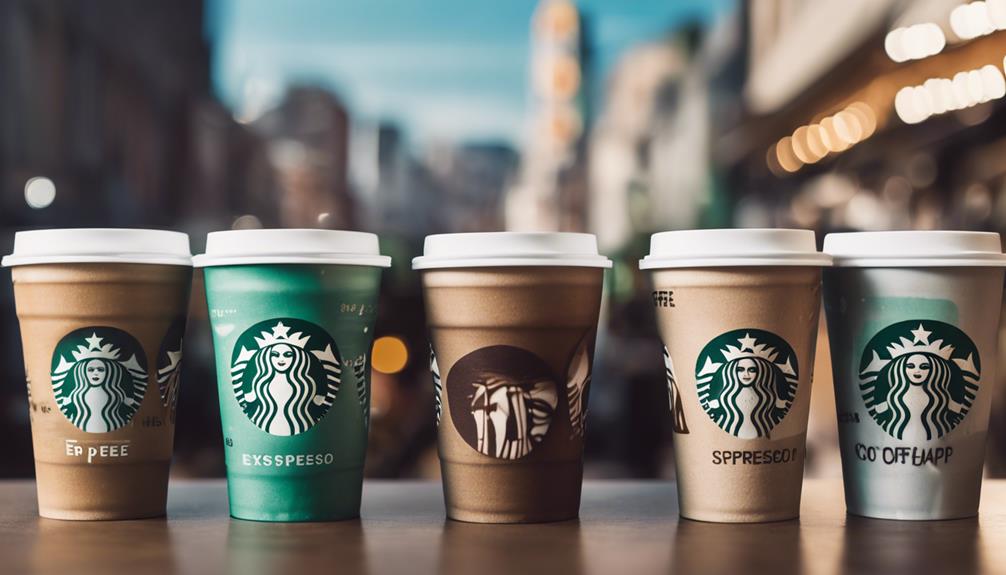
You'll find that espresso prices at popular coffee chains vary widely, with Starbucks charging between $1.75 and $2.75 depending on size, while Dunkin Donuts' prices range from $1.99 to $2.99. This competitor analysis reveals that Peets Coffee offers espresso shots priced from $2.25 to $3.25, indicating a competitive landscape among major coffee retailers.
Here are three key takeaways from this analysis:
- Espresso prices range from $1.75 to $3.25: This highlights the varying pricing strategies among coffee chains, with some charging a premium for their espresso.
- Flavored espresso drinks incur additional costs: This affects overall pricing strategies for these products, making them more expensive than traditional espresso shots.
- Espresso is often priced higher than brewed coffee: Reflecting the perceived value and preparation method, this pricing difference is a key consideration for coffee shop owners.
Hidden Costs in Espresso Production
Beyond the sticker price of espresso, several hidden costs factor into its production, including labor expenses that can add up to $0.75 per drink, depending on the barista's hourly wage and preparation time. You mightn't think about it, but the cost of paying your barista adds up quickly.
On top of labor, you've got additional overhead costs like rent and utilities that can greatly impact your overall cost structure. And let's not forget about equipment maintenance and depreciation, which can accumulate over time and affect your bottom line.
You'll also need to factor in the cost of consumables like cups, lids, and sleeves, which can add around $0.20 to the cost of each latte.
And then there are the regular fluctuations in ingredient prices, particularly high-quality coffee beans and milk. These fluctuations require you to continually adjust your pricing strategies to maintain profitability in espresso sales.
As you can see, there are many hidden costs in espresso production that affect the final price of your shot. By understanding these costs, you can create a more accurate pricing strategy that guarantees you're making a profit.
Frequently Asked Questions
How Much Is a Shot of Espresso?
You're wondering how much a shot of espresso costs, right? Well, it's estimated to be around $0.20 per shot, depending on the coffee beans' quality and other factors that can drive the price up or down. If you’re on a budget, you can also consider making espresso at home with a good quality espresso machine. This way, you can control the cost and ensure that you’re using the best beans for your taste. Additionally, if you’re wondering how much caffeine in espresso, it typically contains around 63 milligrams per shot.
How Much Does One Shot of Espresso Cost at Starbucks?
You're wondering how much one shot of espresso costs at Starbucks. Well, a single shot, made with 7-8 grams of coffee, typically costs around $1.75 for a Tall size, but prices may vary by location and flavor.
How Much Is One Shot of Espresso Compared to Coffee?
You're wondering how much one shot of espresso costs compared to coffee. Generally, espresso shots are pricier, ranging from $2 to $4, while brewed coffee costs between $1 and $3, due to differences in preparation and service.
How Much Does a 2 Shot Espresso Yield?
You're wondering how much a 2-shot espresso yields? Think of it like a treasure chest: you get approximately 2 ounces of rich, concentrated liquid gold, extracted from 17-20 grams of coffee in just 25-30 seconds!
Conclusion
You've pulled back the curtain on the complex world of espresso pricing, and the truth is, it's a delicate balancing act.
Like a masterfully crafted shot of espresso, the perfect price requires a precise blend of quality, technique, and market savvy.
Now that you've got the inside scoop, you can savor every sip, knowing the intricate dance of factors that brought it to your cup.
